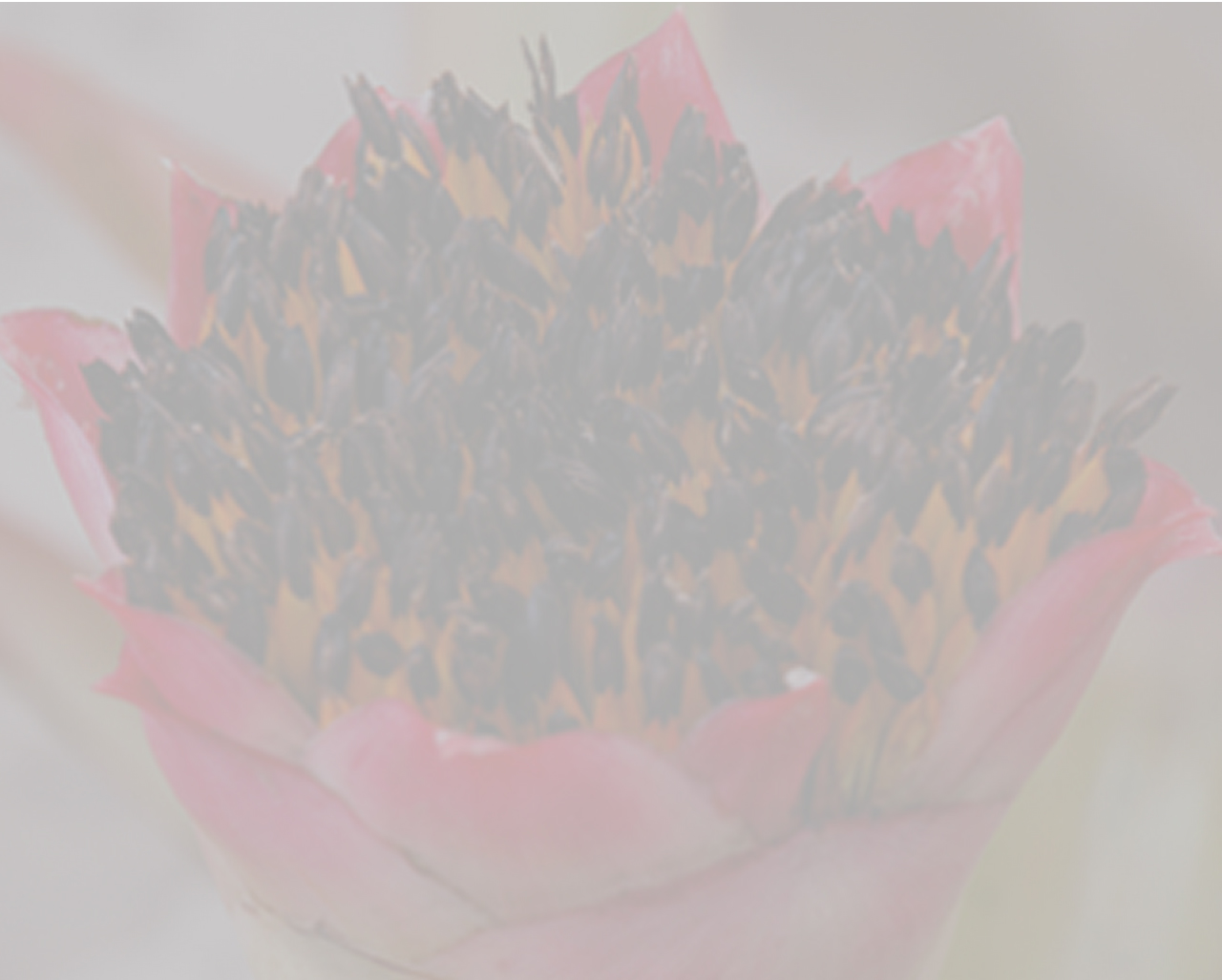
Canistrum camacaense Martinelli & Leme
Taxonomic Change:
- Published as Canistrum camacaensis Martinelli & Leme Bradea 4(33): 256 (1986) —See Leme 1997a p. 28
Literature references:
Comments:
- DISCUSSION
Although the original work states that C. camacaense is morphologically related to C. fosterianum and C. triangulare, this species more closely resembles C. aurantiacum, and together these two species constitute the type subgenus. C. camacaense is smaller in size, predominately epiphytic and has distinctly narrowed leaves toward the base, a more conspicuously branched (though compact) inflorescence, smaller flowers, and sepals with a well developed apical mucro. In Robert W Read's opinion (pers. comm.), this species is more accurately placed in the genus Aechmea because of its sepal characteristics, especially the long apical mucro. This is a valid observation, as is Baker's (1879) treatment of C. aurantiacum. As was mentioned earlier, however, because of the extremely broad and rather chaotic circumscription of Aechmea, it is inadvisable at the moment to transfer species to a different genus. The species in question are easily identified and fit nicely into the tenuous, but recognizable, genus Canistrum.
C. camacaense, like C. aurantiacum, has an funnelform leaf rosette and tripinnate inflorescence (that is, it has subdivided branches) . The flowering scape is more robust and the petals are narrowly lanceolate and acuminate, becoming suberect at anthesis. The ovules are apiculate. The most noteworthy differences between these species and those of Cucullatanthus have to do with the erect petals at anthesis and the obtuse cucullate apex, forming a small hood, in the latter.
Canistrum camacaense is endemic to the moist slopes of the Atlantic forest in southern Bahia, especially in Una municipality and neighboring areas, at altitudes of 200 to 700 m. It is an epiphyte, for the most part, growing in diffuse sunlight in the lower stratum of the forest, or it may live on the forest floor itself, in rather sparsely scattered populations. This species is sympatric with C. montanum, which lives in the upper layer of the forest, and with Nidularium innocentii Lemaire, found growing in the understory, especially in the litter layer (see C. montanum). The data at hand indicate that C. camacaense flowers in the wild from January to July, with a peak in April and May. It has not been recorded as occurring in legally protected areas. —See Leme 1997a

